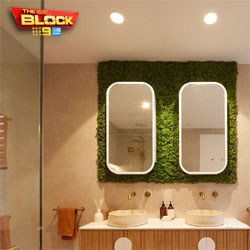Modern construction involves a huge range of different floors by type of construction, engineering parameters and types of coatings. All floors, without exception, have two requirements: durability and strength of the coating. In a huge number of materials is very difficult to make the right choice. Therefore, in this article it is decided to cover a fairly popular and new type of flooring – self-leveling concrete.
In fact, self-levelers concrete is a material that resembles by its texture a liquid polymer-cement mixture with various additives. This composition is poured on the foundation coating in the required volume. As a rule – it is a concrete slab, and spreads under the action of gravity. In a short period of time, the polymer mixture will completely cover the rough surface.
After curing, a polymer layer will emerge over the subfloor, which is the finish floor under various types of finishes (linoleum, tile, wood, etc.). You can also leave the finish surface of the poured floor, depending on its type.
Types of self-leveling concrete
Сconcrete self-levelers are divided by the type of components that are used in the composition.
Due to the specific composition, self-leveling floors have a high degree of fluidity while maintaining high viscosity. Within a short time after pouring, they cover the rough finish, leveling depressions and drops.
They are used in the construction of floors in private homes, apartments, as well as industrial shops and sites.
Types of filling floors
- Thick-layer pouring of floors. Used if the unevenness reaches a difference of up to 50 mm. After drying a thick layer, it is desirable to pour the mixture in one more finishing layer.
- Thin-layer pouring. For differences up to 10 mm. Curing time of 2 to 4 hours.
Advantages:
- Durability. The surface can serve for many years, if it is not affected mechanically
- Wear resistance. Hardly react to abrasive effects
- Vibration resistance. Rigid structure is not destroyed by vibration during operation of household appliances or industrial machines
- Elasticity. This factor has a positive effect when moving a person on the surface
- Hygienicity. In a “polymer monolith” there are no joints and seams, respectively, there is no hiding place for pathogenic microbes
After the mixture is poured, there is no need to level it with spatulas, it disperses itself around the room. But we recommend “rolling out” it with a needle roller in places near walls and corners.
Polymer self-leveling grout
Polymeric is a material based on rubber dust, which in interaction with water forms a homogeneous liquid mixture. It is not toxic, but according to construction standards, it is applied in areas without the constant presence of people.
Features of the material:
- The surface for pouring must be leveled separately with a cutter, as the polymer mixture is thick and does not spread without additional action.
- Additional waterproofing and primer is required.
If the polymer is applied to concrete, the concrete monolith must cure for at least 20 days. The advantages of polymer floors are similar to self-levelling floors in terms of technical characteristics. But they do not self-level and require a longer drying period of 12 to 24 hours.
Polyurethane self-leveling concrete
Polyurethane is a polymer material that is more durable due to its finely dispersed granular crumb.
Major benefits include:
- Floor beauty
- Durability. Up to 20 years of continuous use
- High mechanical and vibration resistance
- Easy to clean, does not emit dust
The disadvantage is that polyurethane begins to evaporate when heated strongly, that is, in this kind of flooring can not be laid a coil for heating. In addition, polyurethane is only available in two colors – gray and brown. The gray can start to turn yellow over time.
The drying time, which allows for flooring operation, is only three days for a thickness of 5-7 mm.
Epoxy Self-leveling concrete
Floors in laboratories, wet rooms are very often coated with an epoxy compound. It is completely inert to acids and alkalis and can be cleaned with different detergents. At the same time it has high strength and resistance to temperature.
The dry mixture contains epoxy resin granules, which interact with hot water to form a mixture similar to liquid tar, but with better flowability characteristics.
Methacrylate Self-leveling concrete
This type of material is used for industrial and civil premises. The mixture consists of two components – methyl acetate and acrylic. When combined, the elements form a structure that resembles a liquid faience. The second name for methyl methacrylate coating is “liquid tile”.
It has the following properties:
- Durability. Therefore, such surfaces can often be found in auto repair shops, workshops, test booths
- Resistance to high and low temperatures allows “pouring” acrylic floors in cold rooms
Easy to make and quick to dry – 4-5 hours
Self-leveled concrete – a great solution for anyone who is going to do the renovation of the house or repair in the industrial, commercial premises, who wants to provide the room comfortable, high quality floors with a high degree of durability and functionality.


